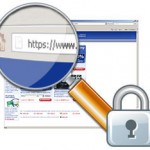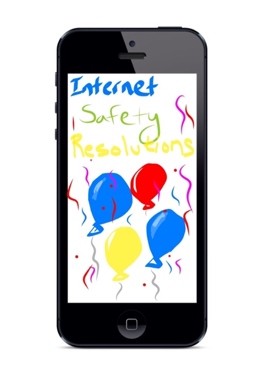Shop Online Safely
If you want to avoid getting trampled on “Black Friday” or even “Black Thursday Night,” shopping online can be a very efficient and effective way to get your holiday shopping done. There are plenty of scammers that would love to get your information and money for their own holiday spending. No matter the time of year, protect yourself by following the “10 Tips for Safe Online Shopping.” You will be safe to buy presents for your friends and family in the comfort of your home.
10 Tips for Shopping Online Safely
1. Keep your applications and computer up to date.
Whether you use Chrome, Firefox, or Safari, you will need to install browser updates in order to ensure that you have the most current security protection. The same is true for other installed applications and your computer operating system. Java Virtual Machine and Adobe have been a favorite targets for hackers. Your operating system is the foundation of your computer operations. For both operating system and application updates, do not ignore the prompts that an update is available. Stop what you are doing, update, and restart your computer to keep your system safe from potential dangers. See All About Updates.
2. Install Anti-Malware
To further protect your device while shopping online, make sure to have Anti-Malware software installed. Whether it is a paid software or free anti-malware, it will protect you from getting malware on your computer. Only purchase or download free or paid anti-malware from a reputable source. Even with the anti-malware installed you still need to be on your guard. It will not protect you from social engineering and phishing attacks. See: How to Detect Phishing and Social Engineering: The Science of Tricking People.
3. Buy from reputable stores and sites.
When shopping online, stick to reputable companies and websites. If the online store is not one of the big box stores, check out their rating on the Better Business Bureau before purchasing an item.

4. Look for the lock!
Make sure all of your shopping is happening in an encrypted web session. Look for the lock! Also, make sure that you are on the correct website (and not www.amazon.uzbet.net.) Many phishing scams will create sites that look identical to the legitimate site. See PUbli
5. Don’t make purchase on public ‘wifi.’
You should not enter payment information (credit card number, verification code, etc) into any website while connected to a public wifi. If you are at McDonalds and Starbucks, just create a wish list and make your final purchase when you are connected to a secure wireless network.
6. Give as little information as possible.
In order to make a purchase you will need to provide your name, address, and payment information. You should never be required to enter your social security number. If a smaller site allows you to check out with online payment services, like PayPal, choose that option. You would rather your credit card information stored with one company as opposed to 10 smaller “mom and pop shops.” You could also purchase a visa gift card to make one time purchases on smaller retail sites.
7. Use strong passwords.
We all love the Amazon “1-click” capability. You would not want someone to take over any of your online accounts that are linked to credit cards. Set a password that has more than 8 characters with capitalization, numbers, and symbols. Have different passwords for each account. See: How to Create a Strong Password.
8. Secure mobile shopping.
Most of us love the convenience of our mobile device for browsing and shopping online. Shop through the application provided by the vendor, credit card company, or retailer (Amazon, Best Buy, Target, etc.) Stick to Apps that you know and trust when downloading from the marketplace or AppStore. Consider installing mobile anti-malware app. See: Secure Your Mobile Device.
9. Check your statement and purchase activity.
Don’t wait for your credit card bill after the end of the billing cycle. Check your account and recent transactions often to make sure all purchases are valid. You should be able to reverse any fraudulent or unapproved charges but you must contact your credit card company in an appropriate timeframe.
10. Nothing beats common sense.
If you see someone selling $200 gift cards on eBay for $20, do you think they are just being nice? What about popular holiday items? Would you click on an ad-link that said you could get an “iPad Air for Free?” Any advertisement, site, or message that you get during the holiday season that seems “too good to be true,” is most likely a scam. Your common sense will be your best protection.
By following these 10 tips, you will be safe, secure and able to shop for the holidays from the comfort of your own home. By using some common sense and implementing simple safe guards, the Internet is no longer a ‘scary place.’ It is much less scary than the crowds and chaos associated with Black Friday shopping!
2 Responses to “Shop Online Safely”
Leave a Reply
What would you lose if your laptop was stolen? Check out these physical security devices, much cheaper than I thought!
Great tips! I didn’t think about cc info and public wifi, thanks!








What would you lose if your laptop was stolen? Check out these physical security devices, much cheaper than I thought!
Great tips! I didn’t think about cc info and public wifi, thanks!